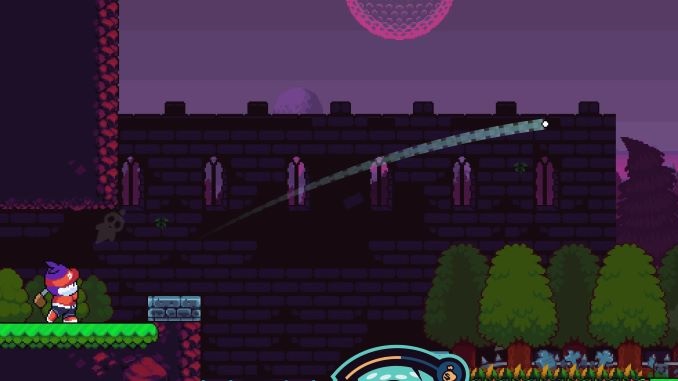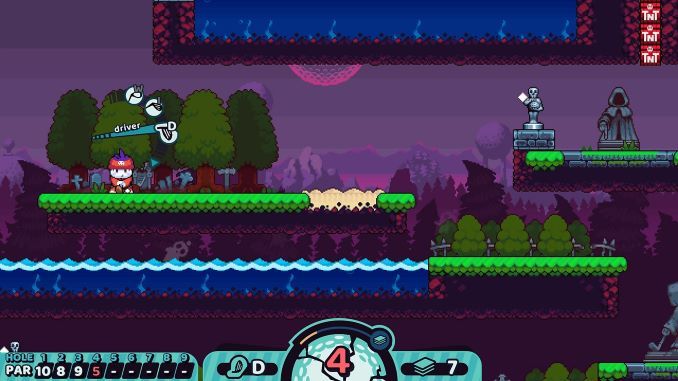Cursed to Golf Chips In Just Below Par

Golf, from my understanding, is a sport where practice is everything. Natural ability takes a backseat to repetition, ingraining form and power into muscle memory until precise control is second nature. It’s this cyclical nature of the sport that led Kyoto-based developer Chuhai Labs to imbue it with roguelike elements in Cursed to Golf, an unconventional combination of golf, platforming, and randomization that has occasional strokes of genius but is far from a hole-in-one.
Published on the Nintendo Switch and PC by Thunderful Games, Cursed to Golf casts players into Golf Purgatory and dares you to conquer 18 holes to call a mulligan on your death and come back to life. The immutable rules of golf still hold—get the ball into the hole—but each course is a labyrinth full of traps both familiar and hellishly devious, designed specifically to make your time on the greens as unenjoyable as possible. Spikes and sand dunes dot the desert-themed Oasis just as sentient vines and piranhas haunt the ethereal Caverns. Each biome has their own Legendary Caddie, a spectral super-Ace damned to Golf Purgatory, who must be bested in order to move onto the next area and get one step closer to ascension.
Armed with a driver, iron, and wedge, each helpful for specific situations and distances, you must get the ball into one of 70 premade holes before your par-counter reaches zero, a task that’s easier said than done even on the earliest levels. It becomes essential then to smash idols—gold idols add four to the par counter, silver idols add two—and utilize Ace Cards correctly to reach the end. Ace Cards are power-ups that give you the upper hand during a run, allowing you to do myriad things such as turn the ball into a rocket, U-turn the ball mid-air to change its direction, or even just add to the par-counter on a whim. Understanding what every card does and when to use them is the difference between victory and yet another failed run.
It doesn’t take long before the roguelike elements are harshly juxtaposed with the premise of golf itself. Golf is meant to be a slow methodical game that minimizes luck and rewards careful planning. Everything from the wind speed and direction to the tree placement and slope severity are taken into consideration by pros to get the lowest score possible. Cursed to Golf mimics the lethargic nature of the sport a little too perfectly—an exponentially rising difficulty curve forces times spent on each hole to quickly rise to 20+ minutes—but doesn’t share the same less-is-more approach to getting the ball into the hole.
As early as the second biome, the courses can get quite hard and take up nearly a dozen strokes to reach the hole. Narratively this tracks; the Greenskeeper, our pinstripe-clad Lucifer of the Links, crafts each course to be as punishing and laborious as possible. More often than not, though, these labors equate to longer courses with more obstacles that demand more precise shots. In theory this is okay, as there is a system in place that rewards you for each extra swing taken and each card used, although its benefits are negligible and hard to track. But this is golf we are talking about, a sport which idealizes a one-and-done perfect shot, so the ever-increasing shot count feels antithetical more than simply challenging.

-

-

-

-

-

-

-

-

-

-

-

-

-

-

-

-

-

-

-

-

-

-

-

-

-

-

-

-

-

-

-

-

-

-

-

-

-

-

-

-








































